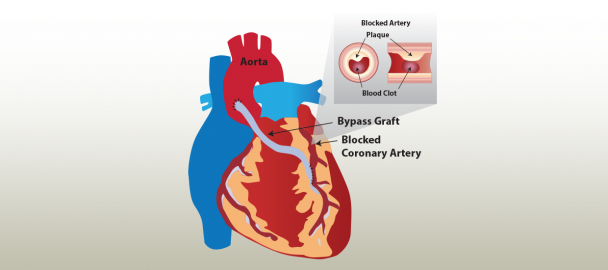What to Expect

Innovative advancements in coronary artery bypass grafting (CABG) surgical techniques have allowed CABG surgery to be performed without having the heart stopped and connected to a heart-lung machine—cardiopulmonary bypass (CPB), and without having the breastbone split open. Minimally invasive direct CAB (MIDCAB) surgery reduces the risks associated with the use of the heart-lung machine—cardiopulmonary bypass (CPB).
How MIDCAB Surgery Is Performed
Minimally invasive direct CAB (MIDCAB) surgery is typically performed when the arteries (left anterior descending (LAD)) at the front of the heart are blocked. The surgeon makes a keyhole opening to access the heart by making a small incision on the left side of the chest and opening a small area between the ribs. While the heart is still beating, the surgeon delicately grafts the bypass. The surgeon uses a stabilization device to still the small area of the beating heart where the bypass is being grafted.
The stabilization device utilizes small suction pods that gently attach to the surface of the heart. The pods work by lifting, not pushing down on the tissue, to stabilize the area where the bypass will be grafted. The device is flexible so that it can be positioned on the heart vessels, yet sturdy so it can steady a portion of the beating heart while minimally affecting heart function.
Benefits of MIDCAB Surgery
Minimally invasive direct CAB (MIDCAB) surgery offer the same benefits as open-heart coronary artery bypass grafting (CABG) surgery with shorter hospitalization, less blood loss, and a faster recovery.
The MIDCAB procedure is only suitable for those at low risk of complications, and those with blocked arteries towards the front of the heart which can be reached by a small opening from the ribs. Each patient's diagnosis and treatment is unique and your physician will recommend the best approach for you.
Cardiac Rehabilitation
Following the surgery, cardiac rehabilitation is provided in stages to help reduce risk for future heart problems and to make the recovery process quick.